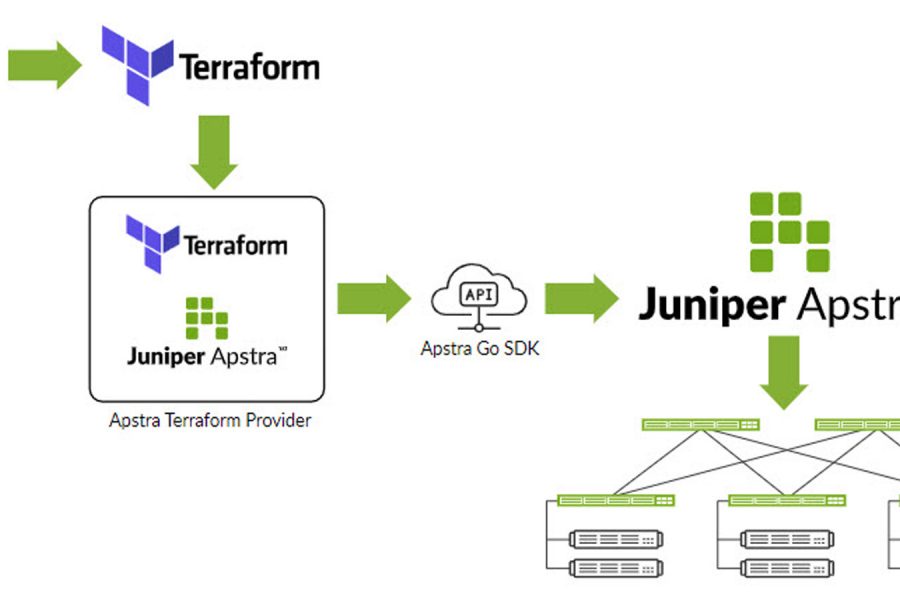Wherever there is operational separation, there is risk for operational drift, meaning operators need to account for different environments. Many times that occurs when enterprises manage and operate their networks by places in network(PIN).
Do you run your campus network with a different team and/or with different tools than your branch and data center network? Does that add complexity and risk as you evolve your infrastructure and automate operations?
Secure and Automated Multicloud
Over the last few months, Juniper Networks has been steadily rolling out our vision for the secure and automated multicloud. It started in February when we announced enhancements to our underlay portfolio to help enterprises become more multicloud-ready. In April, we introduced end-to-end orchestration and visibility through Contrail Enterprise Multicloud.
Today, we switch our focus back to architectural building blocks, bringing a set of announcements designed to simplify and unify the different domains within the network.
Commonality to Reduce Operational Drift
Migration to multicloud takes operational transformation. The big idea behind multicloud is managing disparate networks as one cohesive set of resources with unified policy and control so that operations are the same regardless of the location of the workload or user.
If operations are the key, then IT must simplify architectures to promote commonality. Wherever operational uniqueness exists, there is operational drift, and operators have no option but to account for and bridge the different environments. Each instance of a drift away from consistency in operations accumulates IT complexity.
With the goal of converging on a narrow set of architectural building blocks, today Juniper has announced a campus architectural blueprint to drive EVPN-VXLAN into the campus network. Based on a common EVPN-VXLAN implementation inside of our common network operating system – Junos – it allows enterprises to leverage a common architecture across the data center and campus.
Heading into the Future When You Can’t Let Go of the Past
If starting from scratch, most architects would choose open layer-3 designs. Architecting for multi-vendor from the outset provides long-term economic leverage over suppliers. Layer-3 simplifies networks as it reduces the reliance on somewhat fragile layer-2 constructs, like spanning tree.
But no one really gets to start from scratch in the enterprise. There are existing applications that, while they may not be growing, still have to be supported. So we end up with a hodgepodge of requirements that mandate some mix of layer-2 and layer-3.
When you need to move forward but are unable to remove the past, you need to bridge technologies that service existing requirements while preparing for the future. We believe EVPN-VXLAN in the campus makes perfect sense. Building out a layer-3 campus that has the ability to support layer-2 applications where “necessary” means enterprises can find a balance, which is critical to actually making progress.
A Bright Path to the Future
While EVPN-VXLAN might provide a hook into the past, it is more important that it opens up a path to the future. Juniper’s campus architecture sets up enterprises to leverage the same architecture across both the campus and data center.
In the short term, these domains likely exist as separate islands. But as enterprises move towards multicloud, it opens up the ability to manage the campus and data center like a connected IP fabric with over-the-top policy, control and visibility provided by a centralized controller. If the goal of multicloud is to simplify operations, today’s announcement from Juniper is an important proof point of how that can be possible.
To help you get started, we are introducing a new compact, EVPN-VXLAN capable aggregation switch, the EX4650.
Wired Meets Wireless
Today, Juniper also announced that our campus solutions do not end with the wired LAN. Via a relationship with Aerohive, Juniper is in a position to provide the entire campus solution from campus switches to wireless APs. This means that customers and resellers can purchase complete solutions from a one-stop shop. As customers embrace cloudification of their networks, the Juniper and Aerohive unified wired-wireless solution offers flexible cloud-managed or on-premises-based options that can be easily deployed with Juniper Sky Enterprise cloud-based management.
Stronger Branch Networking at Your Business’ Front Line
Of course, the campus is only part of the story. The on-ramps in the branch are important too, which is why we have expanded our SD-WAN capabilities significantly.
Juniper now supports fine-grained application QoE (or AppQoE). Based on real-time application traffic analysis in the NFX and SRX Series WAN edge devices, we can tune application performance to and from the branch using Contrail SD-WAN’s managed policies. Is Skype traffic experiencing high jitter on link1? AppQoE not only offers visibility into the performance of the applications, but also the ability to prioritize business-critical application traffic with more granular control.
Additionally, we have opened up more architectural reliability and flexibility in the branch and WAN. An SD-WAN industry first, our NFX Series uCPE devices now support active-active clustering, delivering up to twice the connectivity and reliability to your most important sites when paired together.
We’re not only catering to larger deployments, but smaller ones, as well. We’re simplifying our Contrail SD-WAN solution when it comes to scaling down to smaller WANs. While we first addressed large-scale hub-spoke architectures, we are now supporting full-mesh topologies and partial meshes with the vSRX virtual firewall as a hub node in addition to options to use the MX and SRX Series.
Putting It All Together
Juniper has believed all along that the migration to multicloud will be a journey for enterprises. And this journey will happen in different places. The data center, campus, branch and public cloud all have distinct paths.
In April, we provided a path for data center. We are now providing campus and branch models that can help enterprises plot their course to multicloud. This vendor-agnostic technology map should help enterprises ensure that every refresh and expansion opportunity is leveraged to move forward technologically while also becoming more multicloud-ready.
What’s Next?
Multicloud is an end-to-end, top-to-bottom proposition that requires a strong solution from data center to campus, from connectivity to orchestration and analytics. Our announcements today do not represent a newfound ambition to expand our market by repurposing data center equipment as a partial solution for the campus. Rather, we have been building toward a secure and automated multicloud for years with deliberate investments in fit-for-purpose hardware and software and best-in-class orchestration and visibility for multi-vendor deployments.

There are very few companies that can claim the depth and breadth of portfolio along with global support and services reach as Juniper Networks. We stand alone in our commitment to driving an open multicloud future. Today’s announcements are the next step in the journey for us and our customers.


